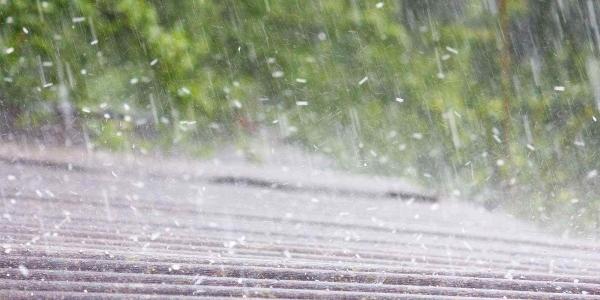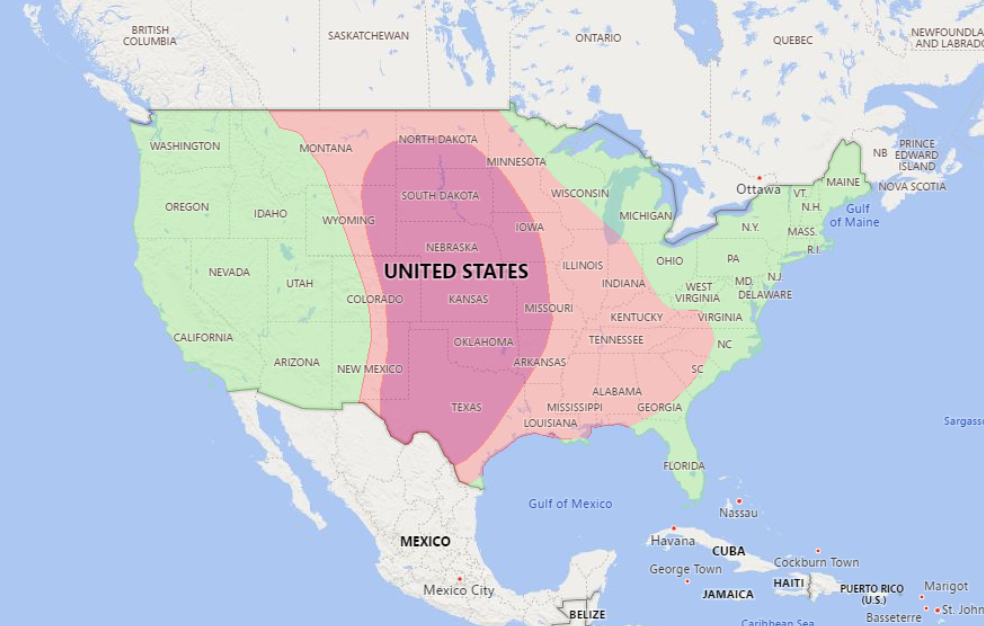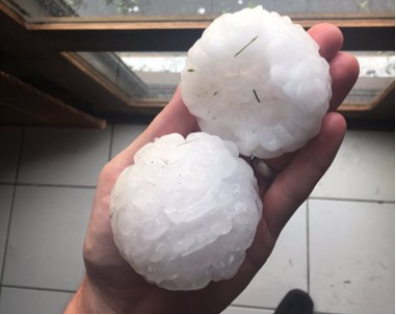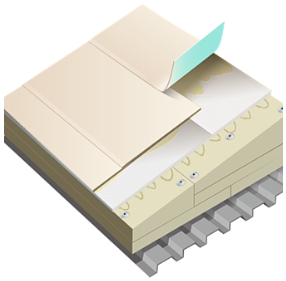Why Very Severe Hail Is Important for Building Owners

By Chris Meyer, FiberTite.
Your roof is your first line of defense against severe weather, especially Very Severe Hail.
In 2017, a single hailstorm battered the city of Denver with tennis- and baseball-sized hailstones, resulting in $2.3 billion in losses, Colorado’s costliest natural disaster on record. Choosing the right roof system could be the difference between shutting your business down or weathering the storm.
As the weather becomes more severe across the country, roof systems need to be designed and installed with resilience in mind. In this article, we will explore types of hail classifications, FM Global designated hail zones in the US, and what you can do to protect your building from Very Severe Hail (VSH).
Types of hail classifications
Usually, you think of a roof protecting your building from rain and water getting into your building. But when that rain freezes into hailstones, you are at risk of impact damage and leaks.
Hail size is commonly estimated by comparing the size of the hailstone to a known object that ranges from the size of a pea (1/4 inch in diameter) up to the size of a grapefruit (4 1/2 inches in diameter). However, within their 1-34 Data Sheet, FM Global, one of the world’s largest property insurers, classifies hail into three sizes: Moderate, Severe, and Very Severe Hail.
-
FM Global Moderate Hail - Less than 1.75 in, which is about the size of a quarter.
-
FM Global Severe Hail - Greater than or equal to 1.75 in, which is about the size of a golf ball.
-
FM Global Very Severe Hail - Greater than or equal to 2 in, which is about the size of a cue ball.
Typically, the phenomenon of hail occurs from May to September. According to FM Approvals, hailstorms increase during the summer when warmer temperatures lead to atmospheric instability and thunderstorms—most often in the mid-latitudes.
Read more: New Tools Can Help Reduce Losses From Hail
Where are FM designated hail aones in the U.S.?
FM Global has designated hail zones in the US-based on the type of hailstones most familiar to the area. These zones are used when designing, specifying, and constructing buildings to ensure they can withstand hailstones without failure.
Originally, FM Global’s zone map released in 2014, when the concept of VSH was first introduced, encompassed a relatively small zone including three counties in Northern Texas, Oklahoma and Kansas. In 2018, they expanded that zone to include nearly 25% of the Midwest (from North Dakota to Texas, and from Colorado to Missouri).
There are three categories outlined on the map under FM 1-34:
-
FM Global Moderate Hail Zone (Green) - Areas in which the hail size does not exceed 1.75 in. (44 mm) for the 15-year mean recurrence interval (MRI)
-
FM Global Severe Hail Zone (Orange) - Areas in which the hail size exceeds 1.75 in. (44 mm) but does not exceed 2 in. (51 mm) for the 15-year mean recurrence interval (MRI)
-
FM Global Very Severe Hail Zone (Red) - Areas in which the hail size exceeds 2 in. (51 mm) for the 15-year mean recurrence interval (MRI)
But these guidelines and hail zones are not only important for FM Global insurance customers, but non-FM Global customers also need to be aware of the VSH standard for their building location, as this information should still be helpful when choosing the right roofing system and design for their roof project.
FM Global has become the leader in establishing best practices for building protection; it’s common for non-FM Global customers to follow FM Global listings on RoofNav® as a baseline for their building and construction projects.
What type of damage can hail cause?
History has shown that hail can be extremely destructive, especially stones that are 2 inches or larger. Hail can pummel glass, plastic, siding, metal, as well as just about any type of roofing. Low-slope roofs are particularly vulnerable; due to the angle of the roofing system, a low-slope roof accepts the full brunt of the hail attack.
Hail damage to roof systems can include:
-
Dents
-
Cracking
-
Crazing (a circular spiderwebbing of microfractures)
-
Mineral loss on modified bitumen sheets (removing the primary UV inhibitor)
-
Compound delamination, exposing membrane reinforcement.
The larger the size of hail and the more intense the hail storm can lead to even more catastrophic damage to buildings.
The cost of hail damage to a roof system varies from a few thousand, for a roof repairs to hundreds of thousands of dollars, for a roof replacement. It’s no wonder building owners are seeking peace of mind, a resilient and durable roof system that will outperform its expected life cycle—and not just from hail.
How can I protect my building?
Protecting your building begins with proper roof system design. In FM’s Very Severe Hail Zone, many roofing projects will require increased design parameters. Owners need to consider:
-
Type of system being used
-
Type of membrane being utilized
-
Component products being used
-
Application of assembly layers
While hail is a big concern in the FM VSH Zones, building owners should not discount other important performance attributes and design requirements, including:
-
Weathering performance
-
UV resistance
-
Uplift performance
-
Fire resistance
A resilient roof system designed for hail performance is highly recommended, where significant hail events occur regularly as a measure to prevent losses. Having a resistant building envelope can help you withstand disruptions, fortify against breaches, and endure extreme conditions.
Read more: Resilient Roofs - What They Are and Why They Are Important
Very severe hail: winding down
While FM Global’s hail standard and zone map might be somewhat new, FiberTite’s track record for outstanding performance in the face of severe events is not. The difference comes down to the integration of chemistry and fabric, plus the design team who stands behind our products.
There’s no telling where the next extreme hailstorm might be. We can only be sure of one thing: Hail is not going away, no matter how you classify it.
Download this FiberTite Very Severe Hail Requirements Spec Sheet.
Learn more about FiberTite in their RCS directory.
Original article source: FiberTite

























Comments
Leave a Reply
Have an account? Login to leave a comment!
Sign In